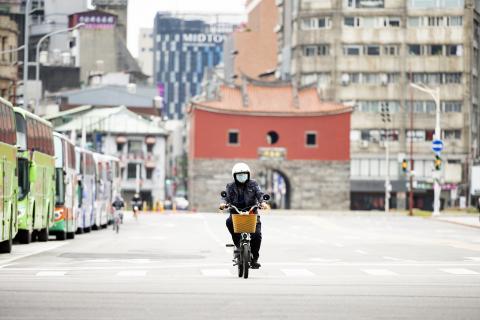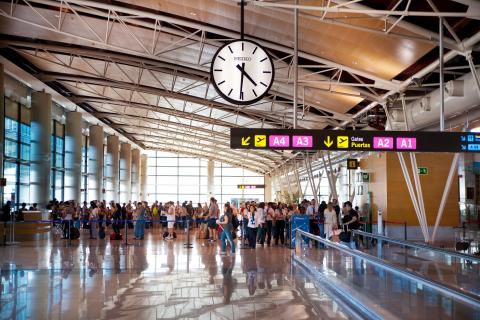Reactions to WHO statement on outbreaks of childhood pneumonia in northern China
Since mid-October, northern China has reported an increase in influenza-like illness compared to the same period in the previous three years. On 21 November, the media and the ProMED system reported outbreaks of pneumonia of undiagnosed cause in children in northern China. According to the World Health Organization (WHO), it is unclear whether these are related to the overall increase in respiratory infections previously reported by the Chinese authorities or are separate episodes. In a statement, the WHO has officially requested detailed information from China on this increase in respiratory illnesses and outbreaks of childhood pneumonia.

Bassat - China (EN)
Quique Bassat
Director General and ICREA Research Professor at the Barcelona Institute for Global Health (ISGlobal)
Any news coming out of China that is linked to an increase in pneumonia cases will be closely scrutinised. The good news is that the increase in cases has been reported quickly and the investigation is being done rigorously. It is very likely that this increase has to do with the seasonal increase in cases of respiratory pathogens that is typical in many parts of the world with the onset of cold weather and which in China has not occurred routinely because of restrictions that were in place (and very tight) until December 2022.
It may be that China is experiencing an epidemiological situation similar to the one we experienced last autumn-winter in our environment. In any case, it should be closely monitored to make sure that this is the case.
Peiró - neumonías China
Salvador Peiró
Epidemiologist, researcher in the Health Services and Pharmacoepidemiology Research Area of the Foundation for the Promotion of Health and Biomedical Research of the Valencian Community (FISABIO) and Director of Gaceta Sanitaria, the scientific journal of the Spanish Society of Public Health and Health Administration (SESPAS)
China was the country that withdrew its very strict covid-19 control measures the latest, measures that significantly reduced the circulation of respiratory pathogens (not only SARS-CoV-2) for a long period. It was to be expected that this autumn they would have a spike in respiratory infections of all kinds (including covid-19), as has otherwise been the case in most countries (although earlier than in China, predictably because they anticipated the withdrawal of measures with respect to mainland China).
The information available at this stage is too insufficient to assess the overall risk - if any, which is unlikely - of the current pneumonia outbreaks in China, and the WHO's action (requesting information and recommending general measures for the control of respiratory infections) seems appropriate in this context.
Aginagalde - neumonías China
Adrian Hugo Aginagalde
Spokesperson of the Spanish Society of Preventive Medicine, Public Health and Health Management (SEMPSPGS), Head of Service of the Epidemiological Surveillance and Health Information Unit of Gipuzkoa and, previously, Head of Service of the Population Screening Programmes Unit at the Ministry of Health
Outbreaks of atypical pneumonia in children are not uncommon in our setting. And in a context of increasing cases of RSV [respiratory syncytial virus], the situation described seems to respond to previously observed patterns. Moreover, improved syndromic surveillance (monitoring of pneumonia cases) allows early detection of these increases in cases.
Unlike viral respiratory infections, mycoplasma [bacteria that cause respiratory infections] cases are more difficult to confirm. They are milder, but empirical antibiotic treatment (without microbiological confirmation) makes it difficult to find out the pathogen, as its growth in sputum samples is inhibited by their action.
As these are mild pneumonias that do not require hospitalisation, they are treated as community-acquired pneumonias whose diagnosis is clinical and supported by radiography, without requiring microbiological confirmation.
In summary, this is a plausible hypothesis, the confirmation of which has some difficulties. Similar circumstances have been seen in our environment and have had no impact on health care. Nevertheless, until confirmation by other means (such as serology), it is too early to make a definitive assessment of the risk involved.
Zúñiga - neumonías China EN
Sonia Zúñiga
Virologist at the National Biotechnology Centre (CNB-CSIC)
Given that the strict covid-19 restrictive measures have only relatively recently been lifted in China, it is not surprising that, as we face the first winter without them, all respiratory infections caused by both viruses and bacteria are generally on the rise. Nor is it surprising that a significant number of these cases will be in children, whose prior immunity will be much lower than in other segments of the population.
On the positive side, because of the experience accumulated during the pandemic, the scientific community, including the WHO, is monitoring the pandemic more closely. The WHO communiqué is relevant and accurate in both the timing and the information it requests.
Sonia Zúñiga is a member of the Advisory Committee of SMC Spain.



